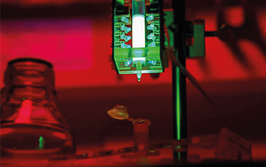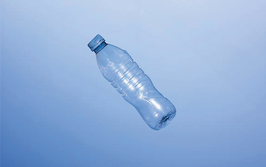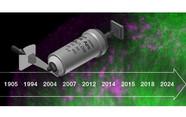Making a Murderer
Analytical science hits the mainstream with Netflix’s hit documentary [spoiler alert!]
Filmed over 10 years, Making a Murderer follows the case of Steven Avery, a man who – having served 18 years for a murder he didn’t commit – is convicted of a second murder. Did the police really frame him?
Ethylenediaminetetraacetic acid – more commonly known as EDTA – is used in blood collection tubes to prevent coagulation before analysis. EDTA is not naturally found in the bloodstream, so would its absence in bloodstains found in the victim’s (Toyota RAV4) vehicle indicate that the evidence was not planted by police (as suggested by Avery’s defense)? The court heard two testimonies – one from FBI Chemistry Unit Chief Marc LeBeau and another from now-legendary analytical chemist Janine Arvizu. The two witnesses had very different takes on what constitutes proof – and what it means to be an analytical scientist…
Defense lawyer: “Are you telling me right now that even though you never tested three other swabs of separate bloodstains found elsewhere in the RAV4 vehicle, that you’re willing to express an opinion that none of those three swabs have EDTA either?”
Marc LeBeau: “I believe that to be true within a reasonable degree of scientific certainty, yes.”
When expert witness Janine Arvizu was called to the stand she stated that there was nothing technically wrong with the procedure when it came to detecting and identifying EDTA. However, she went on to suggest that the potential for false negatives was another matter: “The problem really occurs when EDTA is not detected in a bloodstain [...] I don’t know whether that’s simply because they didn’t detect it or because it wasn’t there. [...] I don’t know really what their method detection limit is.”
Defense lawyer: “And looking at the data that is available in this stack, the validation tests that were done and those sorts of things, is there any indication that the FBI ever found out what the actual detection limit or method detection limit would be for this kind of a test?”
Arvizu: “No, there’s no such indication in these data.”
Defense lawyer: “And so from this data, can you express any opinion about whether the three stains examined by Mr. LeBeau could have come from the blood sample, the blood tube Q-49 that was also examined?”
Arvizu: “It’s quite possible that those blood swabs could’ve come from Mr. Avery’s blood tube, but simply not been detectable by the laboratory.”
Defense lawyer: “So even having gone through this test, is it possible that EDTA is or was in those three RAV4 stains?”
Arvizu: “Yes.”
Defense lawyer: “What about the three swabs from the RAV that were not tested by Mr. LeBeau? Can any conclusion be drawn on that?”
Arvizu: “I’m an analytical chemist. I’m not in the business of just guessing what’s in samples. We have to test samples to decide what’s in them.”
Another victory for common sense. But the case continues.

Over the course of my Biomedical Sciences degree it dawned on me that my goal of becoming a scientist didn’t quite mesh with my lack of affinity for lab work. Thinking on my decision to pursue biology rather than English at age 15 – despite an aptitude for the latter – I realized that science writing was a way to combine what I loved with what I was good at.
From there I set out to gather as much freelancing experience as I could, spending 2 years developing scientific content for International Innovation, before completing an MSc in Science Communication. After gaining invaluable experience in supporting the communications efforts of CERN and IN-PART, I joined Texere – where I am focused on producing consistently engaging, cutting-edge and innovative content for our specialist audiences around the world.

















